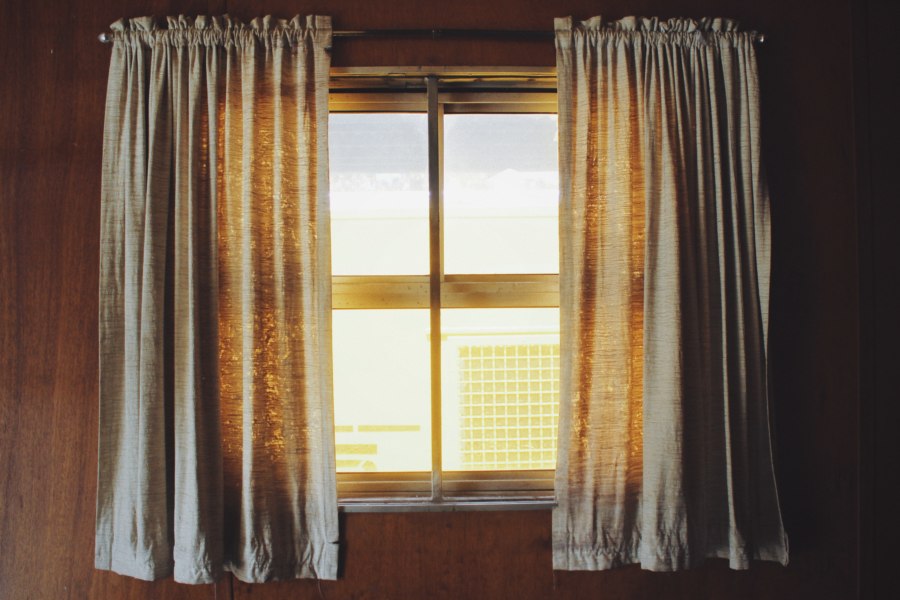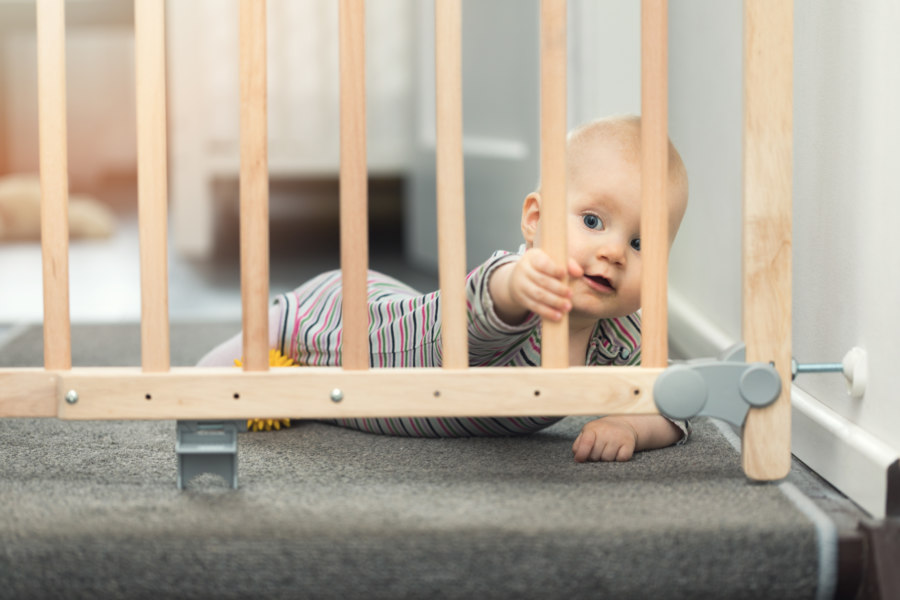We’ve addressed each room of a house on here, but what about the in between places like doors, windows, and stairs? There are a lot of safety hazards that can occur because of doors, windows, and stairs. Here we have gathered safety tips for each area and how you can prevent an injury!
Doors
You may want to prevent your baby from entering a room for a variety of reasons, including dangerous or non-infant safe conditions on the other side. There a few strategies to go about this, the first being door handle locks. Door handle locks can fit both lever handle and standard round door knobs, and work by surrounding the doorknob with a plastic enclosure that prevents it from being opened. It is advisable to use devices like these on doors leading to spaces such as basements, utility rooms, doors leading outside, and similar locations. Another method is the use of a plastic two-sided hook that can prevent the door from being opened but leaves a slight gap to allow air flow between rooms. One end of the hook attaches to the edge of the door, and the other side attaches to the door frame. Additionally, to prevent your baby’s fingers from getting jammed in a door that they might close on themselves, finger guards are available that snugly fit the edge of a door and prevent the door from being closed completely.
Windows
Windows, like doors, can be very dangerous areas for infants and toddlers by allowing them access to dangerous locations or situations such as falling, and also present the risk of entanglement with blinds or the cords with which blinds are lowered and raised. Start baby proofing a room with windows by ensuring that your baby’s crib is not close to a window, where they might be able to climb onto or entangle themselves with the cords attached to the blinds. Next, if your windows come equipped with window guards that prevent them from opening more than an inch or two, utilize them especially on upper stories of a building. If not, these can be purchased and perform the same function. Do not allow playing on areas such as balconies, porches that aren’t properly fenced, or other locations that may present the risk of falling. Modern screens are not designed with withstand the weight of a child pressing against them and should not be relied on to prevent falls, so utilizing window guards is the best preventative measure to protect against falls.

Stairs
Stairs are another area of the house that present a high risk for falls, and because of this, you should have the appropriate precautions in place to prevent your infants from falling down the stairs/entering stairwells. The American Academy of Pediatrics recommends that safety railings/gates are installing at the top and bottom of stairs, that stairs are free of toys, clutter, and other objects that may cause tripping, that stairs are well lit at all times, and that you teach your child that playing on the stairs or carrying toys up and down the stairs is dangerous. Be careful carrying your infant up or down the stairs, because many documented falls happen when parents or caregivers are carrying infants on the stairs. Use a ramp or elevator when possible, and don’t carry other objects if you are carrying your infant on the stairs. If your child is on the stairs, they should be monitored at all times by a responsible adult. If doors lead to stairwells in your home, keep the door closed at all times and consider using a door knob lock to prevent your infant from potentially turning the knob and gaining access to the stairs.


